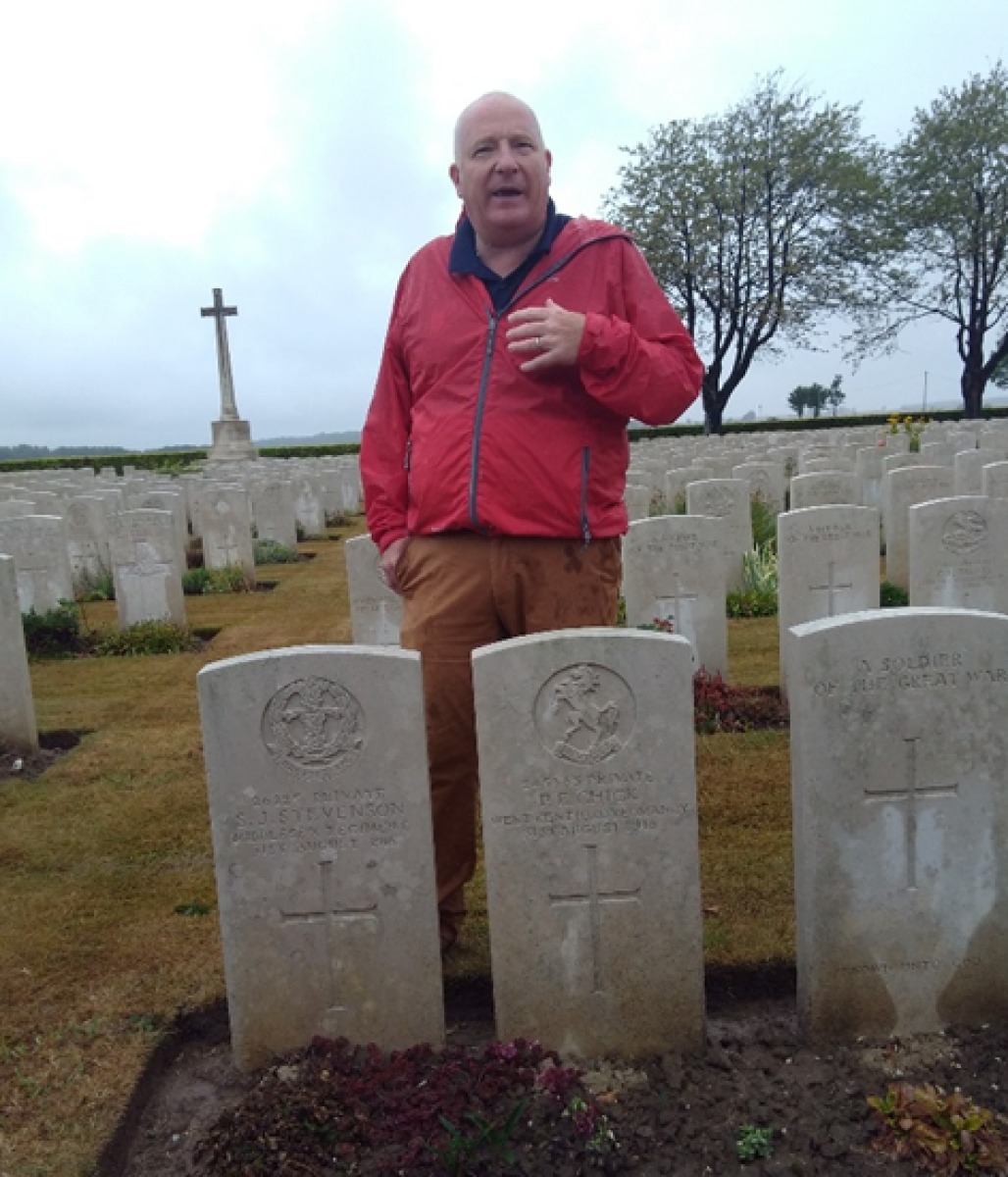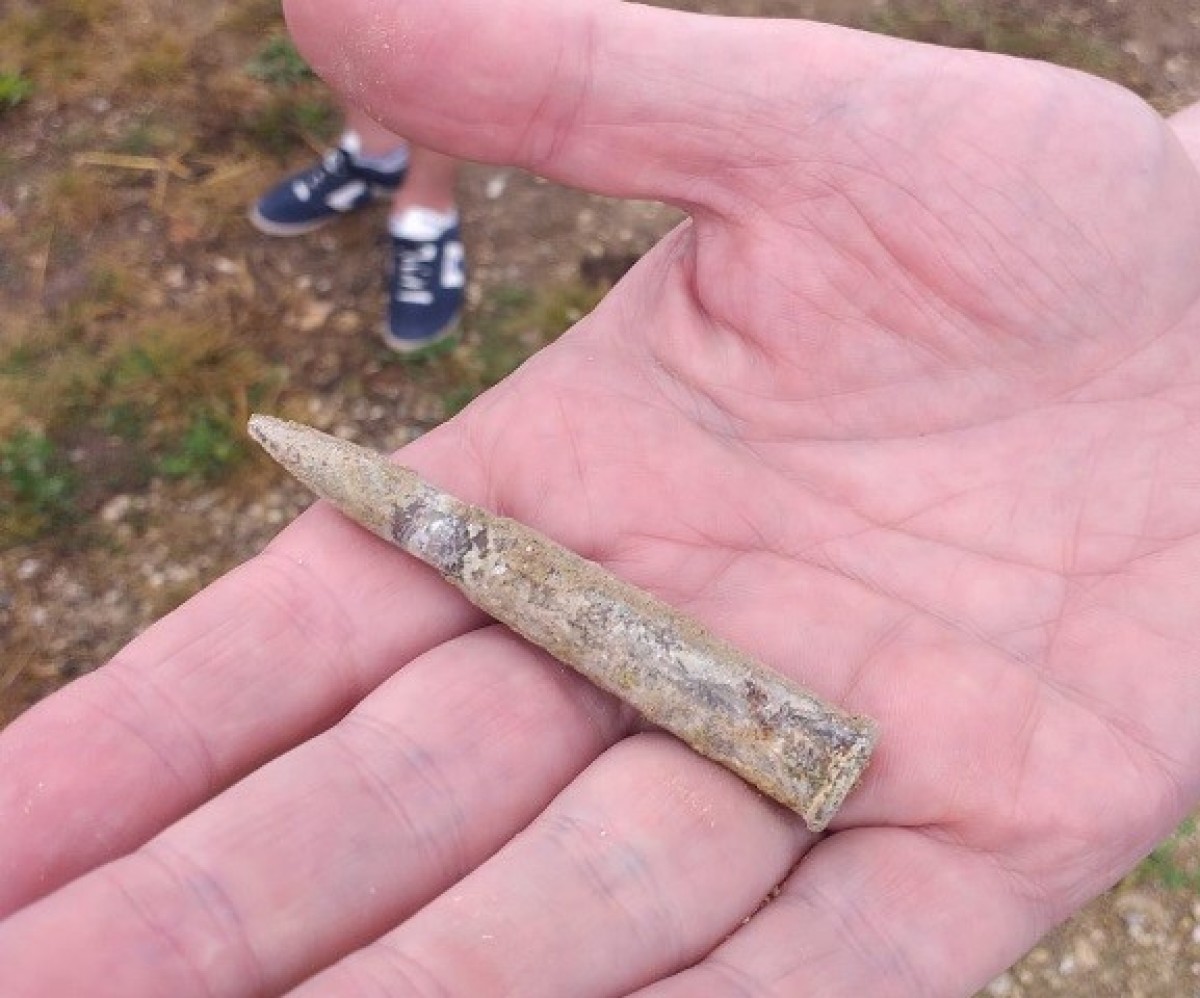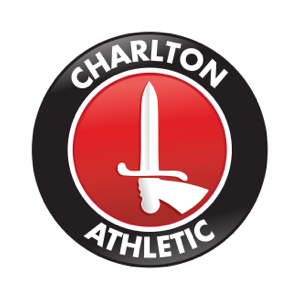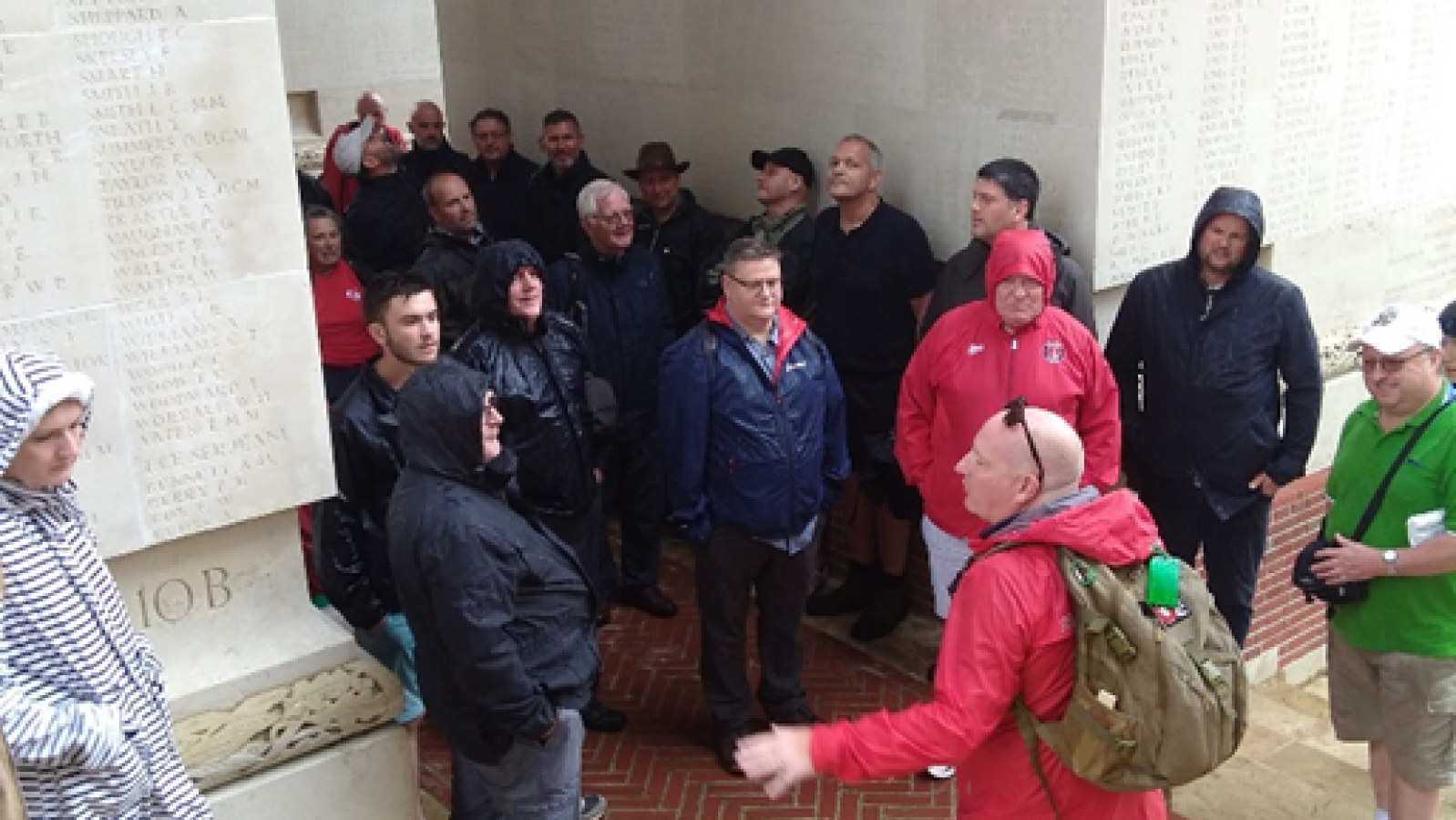Joe Hayes went on a tour this summer with fellow Charlton fans to the Somme and Arras Battlefields and came across a member of the Charlton Athletic family who gave their life in the conflict. Below is an account of his trip.
Before talking about seeing our own former players in cemeteries and coming across a real First World War unexploded bullet lying on the ground, first I’ll explain in brief what this trip was about and my connection to the trip.
Firstly, as a soon to be third year History student at the University of East Anglia, who for one of my modules will be studying the First World War, it seemed appropriate that I went on this trip to improve my knowledge around the subject and understand the skills needed if I was to potentially have a career as an historian like our guide Clive Harris (Director of Battle Honours Tour Limited, Member of Guild of Battlefield Tour Guides and Charlton Athletic Museum Trustee).
The Somme and Arras Battlefield Tour followed on from a Charlton Life organised trip two years ago to the Ypres Salient. As before, money raised was donated to the Charlton Upbeats team and to the Charlton Athletic Museum.
The itinerary of this year’s tour was designed to visit key sites that have been chosen to reflect the history of Charlton Athletic Football Club and its close involvement with the war. There was were also great personal experiences and connections for some people on the trip, with many people’s family members being listed at some of the sites we visited.
After arriving in France in the early morning of the 27th, our first stop was Gommecourt. Personally, this type of cemetery is one that I like visiting most. It’s smaller and is a lot less well visited than the huge sites such as the Thiepval memorial. Gommecourt is no different. Here the 56th London Division and The 46th North Midland Division took part in an ill-fated diversionary attack to the North of the 4th army in 1916 alongside the main Somme offensive. I like visiting these types of cemeteries more than others as they are mostly made of just one or two regiments graves and from the same action.
Clive made a very important point during his talk at Gommecourt, that it was our choice as visitors to the sites, whether we had to listen to Clive’s talks or visit the cemeteries without background knowledge to the key battles that would have taken place. The point being that, people are allowed to visit and respect the sites in their own way.
Despite the heavy rain, that was present throughout the day, no one was put off as we then stopped off at the Thiepval Memorial. Before this trip, Thiepval was one of two sites, that I had previously visited. It’s a superbly well kept site, with an excellent visitor centre and highlights the way in which the United Kingdom and the Commonwealth War Graves Commission values the actions its soldiers on the Western front took during the First World War.

The visit to Caterpillar Valley, was one that will potentially be most remembered by all on the trip. Caterpillar Valley is home to the memorial for fallen Charlton player Fred Chick. Born in April 1892 in St George’s Hannover Square, Chick spent much of his childhood in the Britten Street Old & New Workhouse, after being admitted at age 6 in November 1898. As customary to most workhouse children Chick was given training in a specific trade to gain vital skills to make a living as an adult. In 1911, Chick was a spectacle frame worker for an optical lens company in Camberwell, South London.
His move south of the river Thames, was followed by him joining Charlton Athletic. Despite the club obtaining no official record of him playing, Chick does appear in a named 1913/14 team photograph dressed as a trainer. The link to him joining Charlton is officially unknown, but one of Charlton’s most famous players pre-World War One was Scotty Kingsley, who was also worked in the optical lens business. Chick joining Charlton was coupled with great amateur success for the club, as they rose from the Lewisham, Woolwich and Southern Suburban Leagues to the London Premier Division.
15 months after the outbreak of the First World War and soon after his marriage to Florence Gordair, Chick would enlist, joining the Queens Own Royal West Kent Hussars, service number 2311. Chick’s unit didn’t serve in France, but as a result of growing casualties he was part of a draft to France in the summer of 1916.
On the 31st August 1916, the casualties were drawn up for the month. The casualties for the battalion were 9 officers killed, 17 wounded, other ranks, 88 killed, 146 missing, 328 wounded. Fred Chick being among those who fell. Initially, Chick was posted as missing, but his body was then recovered along with a fellow comrade from the same unit at the end of the war. As explained, Chick’s body is now buried at Caterpillar Valley Cemetery, and is regularly visited. It is important that as fans of Charlton Athletic, that we give special remembrance to our former players who served and fell during the First World War. This shows an example of the way in which Charlton as a community come together to honour its war dead.

The evening was followed by the sampling of local beers in Arras Bars and restaurants and discussion over the day’s events, which credit to the work of Clive and also the Commonwealth War Graves Commission had left a feeling of emotion and huge interest from people on trip. When on tours and visiting historical sites, you always look towards that feeling of engagement and lasting memories and the events of the whole weekend definitely gave us that.
The following day, we visited Cerisy to hear the story of Sandy Turnbull. Turnbull was an inside forward for both Manchester United and Manchester City, who notched up an impressive 143 goals in 330 appearances during his career. This was prior to him enlisting in the 23rd Battalion of the Middlesex Regiment, followed by his transfer to the 8th Battalion of the East Surrey Regiment. Turnbull was Killed on the 3rd May 1917, during the Battle of Arras. Turnbull, despite his life ban from Football in 1915 along with other players for match fixing, is a well-remembered and respected soldier who fought on the Western front and is commemorated on the Arras memorial. This part of the trip will also be well remembered for the finding of a real unexploded bullet from the First World War, lying on the ground in the dirt near to the memorial at Cerisy.

Discoveries like these are what make these trips special. It adds more to that factor of long lasting memory that I already explained in this blog.
The last site from our Somme & Arras Battlefield Tour was the visit to Vimy Ridge Memorial and trenches. Vimy highlights the tactical importance of the ground and significant achievements of the Canadian Corps, assisted by the British on either flanks in April 1917. Similar to Thiepval, Vimy Ridge was one of the historical sites that I had visited prior to this trip. Both times I’ve visited I have been amazed by the size of the craters from the Western Front created as a result of heavy shelling. The preservation of trenches is also very impressive and leading to the conclusion of this blog it shows how we as society value the First World War in terms of importance and allows for current and future generations to fully understand its significance in history.
As a club, we have always been at the forefront of the community and have received consistent praise for the work achieved through the Charlton Athletic Community Trust. We have a brilliant club museum, that is run completely by supporters of the club acting as trustees, of whom several were present on the Battlefield tour. The tour over the whole weekend, was a great reflection of how we as people remember and honour our war dead, something we will continue when we visit the Normandy beaches and cemeteries in the summer of 2020.
For further information on upcoming events follow Charlton Museum on Twitter.

